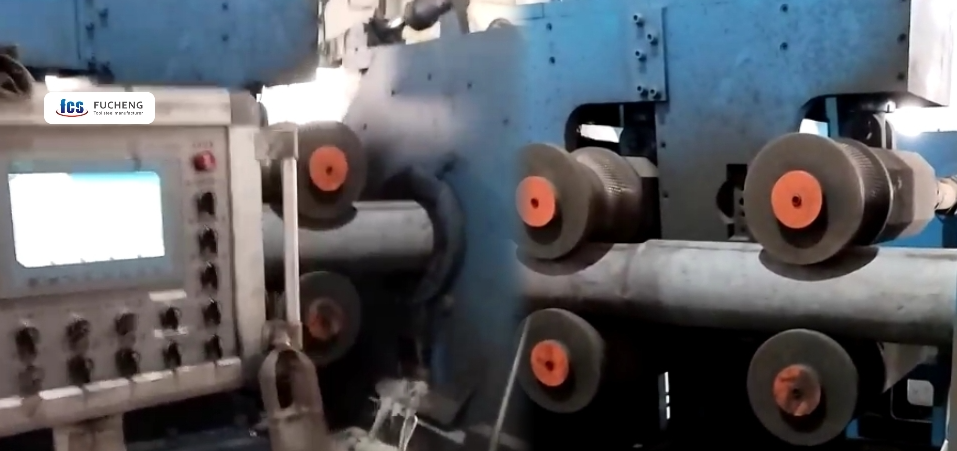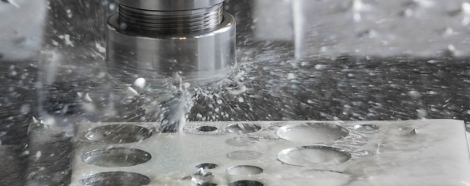Cutting through hard tool steels can feel like fighting a brick wall. These materials are known for their extreme hardness and wear resistance. They quickly wear out tools and make machining difficult. Ever wondered why some steels are so tough to cut? It’s not just about the material’s strength. It’s the combination of hardness, alloying elements and other factors. But there’s one small detail that can make a big difference when working with these tough steels…
Hardest Tool Steels to Cut
Materials contain high carbon and elements such as tungsten, vanadium, and molybdenum, they become incredibly difficult to cut. These metals are highly wear-resistant, making them hard to cut. They also maintain their strength, even when you push your limits.Below are some of the toughest tool steels to machine:
| Tool Steel Type | Hardness | Composition | Description |
|---|---|---|---|
| D2 Tool Steel | 62-64 HRC | 1.5% carbon, 12% chromium | Known for extreme wear resistance but challenging to machine due to high hardness. Ideal for durable applications. |
| M2 High-Speed Steel | Up to 65 HRC | Tungsten, molybdenum, chromium, vanadium | Widely used in high-speed operations. High hardness and alloying elements make machining difficult. |
| T15 High-Speed Steel | Up to 67 HRC | 12% tungsten, 5% vanadium | Exceptional wear resistance and high hardness (among the hardest to cut). High tungsten content ensures cutting performance. |
| CPM REX 121 | Up to 72 HRC | 3.4% carbon, 9.5% vanadium | Powder metallurgy steel with 72 HRC hardness. Extremely difficult to machine, ideal for extreme cutting conditions. |
| Vanadis 4 Extra | Up to 64 HRC | 4.7% chromium, 3.7% vanadium | Powder metallurgy cold work steel with excellent wear resistance, making it notoriously hard to machine. |
| CPM 10V | 64 HRC | 9-10% vanadium, 1.4-1.6% carbon, 5-5.5% chromium, 1.3-1.6% molybdenum | High vanadium content and dense carbide structure provide superior wear resistance but make it extremely hard to machine. |
| M4 High-Speed Steel | 65 HRC | Tungsten (3.75-4.5%), molybdenum (4.5-5.5%), chromium (3.75-4.5%), vanadium (1.75-2.25%), carbon (0.85-1.05%) | Combines carbide-forming elements for exceptional wear resistance, creating significant machining challenges. |
Factors Affecting Cutting Difficulty
Cutting tool steels can be difficult. I’ve experienced that frustration myself. It’s like trying to cut through a rock with a butter knife. Why is that? There are a few key reasons why these materials are tough to cut.
Carbide Content
Tool steels like D2 and M2, which have high carbide content, are extremely tough. They contain 10-15% carbide, making them very abrasive. I remember using D2 steel on a project last year. The carbide particles wore down my cutting tools quickly, like tiny bits of stone. This constant wear made the tools dull fast, so I had to replace them often. These carbides are so strong that they don’t just resist wear—they actually contribute to tool failure. It’s a constant struggle, where the steel’s hardness makes each cut feel like an uphill battle.
Alloying Elements
Elements like tungsten, molybdenum, and vanadium improve wear resistance but also make cutting more difficult. High-speed steels with 18-20% tungsten are some of the hardest to machine due to their strong resistance to wear.
Microstructure
The microstructure of tool steels greatly affects how difficult they are to cut. I recall working with D2 tool steel last year. Its martensitic structure, packed with carbides, made it feel like cutting through rock with a butter knife. Martensitic steels, because of their high carbide content, resist cutting much more than pearlitic or spheroidized steels. The finer the carbide distribution, the harder the steel becomes to machine. It’s like facing a wall of tiny blades, where every cut requires more power and precision. The wear on tools increases quickly. This tough microstructure demands special techniques; otherwise, your equipment will wear out fast.
Workpiece Size
When working with larger or thicker pieces of tool steel, the difficulty increases fast. The mass of the material needs more power to cut, which generates a lot of heat. I remember working on a tough D2 steel project last year. Cutting through a 3-inch thick slab felt like fighting a furnace. The added heat, along with the extra force needed, slowed my progress and quickly dulled my cutting tools. The heavier the material, the faster the tool wears out. It’s a constant frustration for anyone working with tough steel.
Surface Condition
Scale, decarburization, or hard surface layers on tool steels can make cutting more difficult. These conditions cause faster tool wear. Reducing the efficiency of the machining process.
Considerations When Cutting Hard Tool Steels
When cutting through hard tool steels, precision is crucial. Every move must be intentional. To get the best results, focus on the important details. Get those right, and the steel will almost fall into place.
Cutting Speed
When working with harder tool steels, cutting speed is crucial. With steels harder than 60 HRC, like D2 or M2, pushing too quickly often causes overheating and rapid tool wear. From my experience, slower cutting speeds allow for effective machining. This helps the tool last longer while maintaining precision.For example:
| Steel Type | Cutting Speed Range |
|---|---|
| Free-cutting stainless steel | 120-250 m/min |
| Hard-to-cut stainless steel | 70-130 m/min |
Tool Selection
Working with tough tool steels, it’s crucial to choose the right tools. PCD (Polycrystalline Diamond) or carbide tools with specialized coatings are great options for handling tough materials. From my experience, tools with smaller diameters and more flutes tend to perform well. They cut through the material efficiently and precisely. It’s like they are made to glide over the toughest surfaces with ease!
Chip Load
To prevent early tool wear, maintain a steady chip load. For hard steels, chip loads typically range from 0.08 to 0.2 mm per tooth. This helps reduce overheating and prolongs tool life.
Cutting Depth
Use smaller cutting depths with higher feed rates. This reduces heat buildup and minimizes stress on the tool. It helps maintain performance and extend tool life.
Coolant
When cutting hard tool steels, it’s important to keep the tools cool. Without proper cooling, heat builds up, which can wear out your tools faster. I recall working with D2 steel and the tool got too hot without the right cooling. It started to wear down quickly. That’s when I switched to an oil mist system, and it worked wonders. The cooling mist helped keep the temperature in check and also prevented the buildup of edges that slow down cutting. Air or oil mist cooling systems really help keep your tools sharp and make your work more efficient.
Cutting Parameters
Cutting hard tool steels, I’ve found that sticking to the manufacturer’s recommended cutting parameters is essential for success. With tougher steels like D2 or M2. I usually reduce the cutting speed by at least 10%, sometimes even more. For instance, when I worked on a D2 tool steel project last year. Cutting at the suggested speed was too aggressive. It caused rapid tool wear and overheating. By slowing down, I noticed a clear improvement in both the tool’s lifespan and the quality of the cut. Reducing the speed prevents the tools from wearing out too quickly and also reduces heat buildup, which can otherwise distort the workpiece.
Surface Finish
Machining tough steels, achieving a perfect surface finish and meeting tight tolerances can be challenging. From my experience, slowing down the cutting speed and using specialized tools can make a big difference. I worked on a D2 tool steel project last year, where using a carbide-coated tool at a slower speed helped me maintain control. This approach prevented tool wear and ensured a smooth finish. Working with high-hardness steels requires patience and precision, but with the right approach, the results are definitely worth the effort.
summary
Cutting tough tool steels can seem challenging.But with the right tools and techniques.You can get it done. Focus on precision, choose the right parameters.And ensure proper cooling. It may take time and effort.But the satisfaction of cutting through tough materials is worth it. Stay persistent, and you’ll see the results. Enjoy machining!





